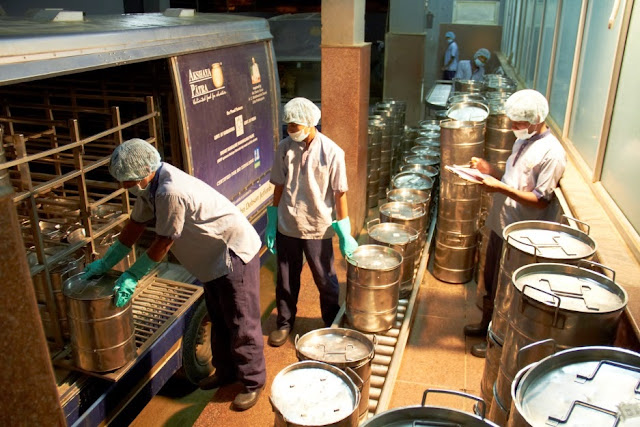While the primary objectives of Mid-day Meal
Programme are to avoid classroom hunger, improve school enrolment and attendance,
and address the issue of malnutrition, the benefits of this scheme go well
beyond these objectives.
The Mid-day Meal Scheme (MDMS) in its
full-fledged form was implemented in 2004 to address two key issues: hunger and
education. As a part of this scheme, a wholesome meal is provided to all
children in the 6 to 14 age group studying in government and government-aided
schools, making nutritious meal a reality for children who otherwise can’t
afford a square meal.
With the implementation of this scheme, it
became easier for the authorities to convince people to send their children to
school. Children, for their part, were more than eager to come to school, as a
result of which school enrolment and attendance improved. It also helped in
solving the problem of classroom hunger—one of the main reasons for lack of
concentration in school children.
Over the years, the Mid-day Meal Scheme has
done a fair bit to eradicate hunger and promote education, but these are not
the only two areas where the scheme has helped. There exist other areas where
the indirect impact of the same has been felt.
It Promotes Socialisation
Among the less-known advantages of
mid-day meal scheme, one of the most important is the fact that it fosters
the habit of eating together in children. The sight of all children coming
together every afternoon for their meal is a sight to treasure. This
intermingling improves unity among them.
You can never stress enough on the importance of socialisation in India. The ambitious mid-day meal
programme has helped ensure that caste, religion, or other similar factors
don’t come in between children and education.
It Provides Employment
Opportunities
The Mid-day
Meal Programme is the largest school meal programme in the world, feeding
over 120 million children of over 1 million schools. But obviously, an
operation of this scale will require a huge workforce. According to the data
put forth by the Government, the Programme employs around 2.6 million people across
the country as cooks and helpers.
Besides the cooks and helpers hired by
schools, there are several individuals who are employed by the NGOs who have
got into a public-private partnership (PPP) with the Government to implement this
scheme. The Akshaya Patra
Foundation, which feeds over 1.5 million school children across ten states
of India, hires about 6300 people. The not-for-profit organisation based out of
Bengaluru also operates two decentralised kitchens where women self-help groups
(SHGs), who have a better idea of the local palette, are employed.
Other Benefits
The guidelines put forth by the National
Programme of Nutritional Support to Primary Education (NP-NSPE), state that the
Government should ‘mobilize community
support and promote public-private partnership for the programme’ wherever
possible.
Yet another less-known benefit of the
mid-day meal scheme is that it helps the local economy as perishable
commodities, like vegetables, dals, oil, etc., are purchased from the local
market.
In essence, the Mid-day Meal Programme has
done a lot for the children of our country. However, considering the vast size
of our country, we understand that there’s a lot to be done. If we are to
achieve this, we need to work together; all of us, Central and state
governments, partnering NGOs, communities, and every single stakeholder.
Akshaya
Patra has been working in this field for more than 15 years now, so we can say
we can confidently say we have enough experience and expertise required to take
things ahead. What we need is your support through online donation to ensure
that more children reach school and script their own future.

















2 comments:
Akshaya Patra is doing great work. It is filling many children stomachs every day. Keep up the good work.
Good to know. Continue the good work.
Post a Comment